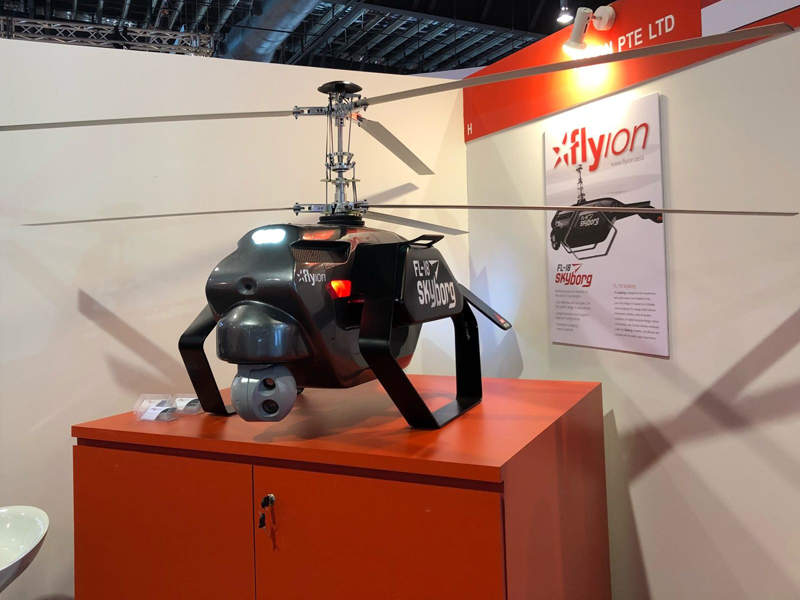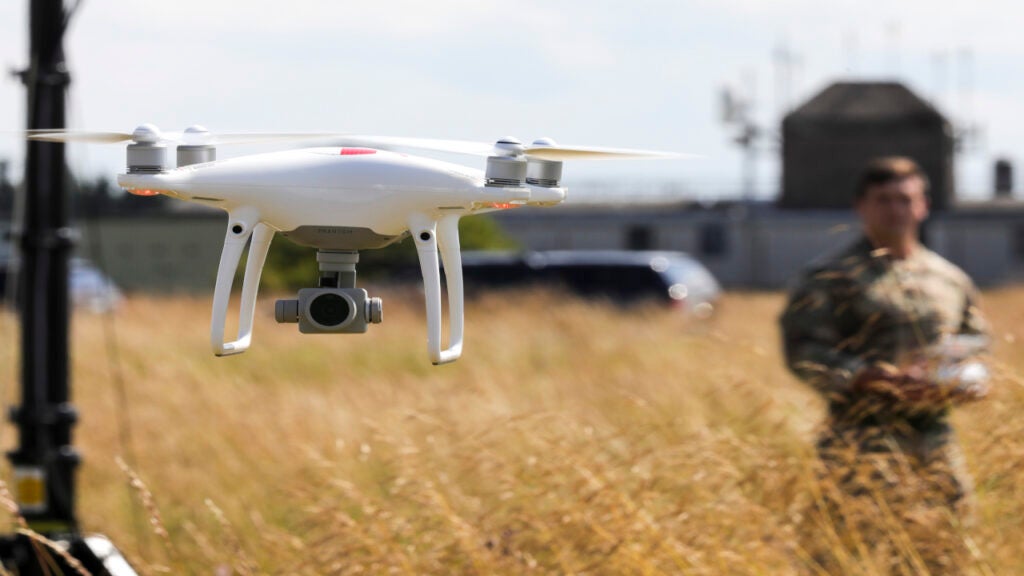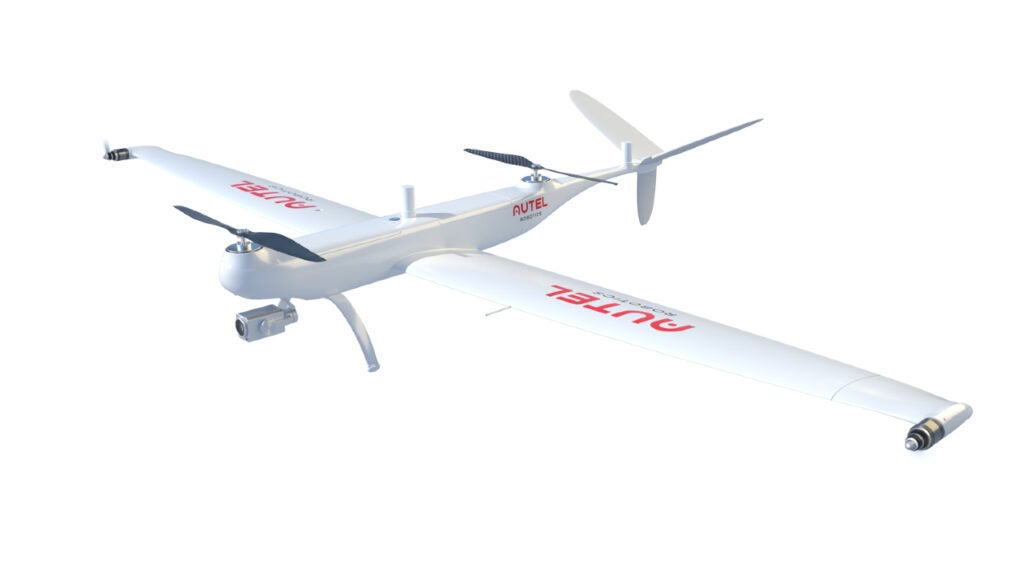
FL-18 SkyBorg is a new unmanned aerial system (UAS) designed and developed by Flyion, a Singapore-based unmanned air systems developer.
Unveiled at the Singapore Airshow 2018, the UAS is suitable for a range of defence and civilian missions, including reconnaissance, border surveillance, counter-terrorism, anti-smuggling, search and rescue (SAR), surveying, natural disaster management, and other special operations. It can execute missions on land or at sea in both day and night conditions.
The UAS can also support commercial and industrial applications such as logistics, energy, forestry, mining and agriculture.
Design and features of SkyBorg rotorcraft
The SkyBorg unmanned aerial vehicle features a compact design that requires minimum maintenance. Measuring 1.75m-long, 0.71m-wide and 0.98m-high, it can be easily transported and operated in hard to reach areas.
The empty and maximum take-off weights of the UAS are 22kg and 55kg respectively.
The UAS features large fuselage outfitted with a user-friendly payload interface unit. The tail assembly comprises two horizontal surfaces in an inverted V layout.
Two main rotor heads, each with a three-bladed variable pitch contra-rotating propeller, are provided. Each propeller, with a rotor diameter of approximately 2.42m, rotates at speeds of 750rpm.
The coaxial design of the rotors improves aerodynamic stability, supports all-weather operation and allows for carriage of increased payload.
The vertical take-off and landing (VTOL) UAV can hover, take-off and land vertically. Its fixed skid-type landing gear assembly facilitates safe take-off and landing operations on emergency landing areas or hard surfaces.
Payloads
The FL-18 SkyBorg unmanned aerial vehicle can accommodate different payloads weighing up to 30kg. It carries electro-optical and infrared (EO/IR) sensors in a gimbal-mounted dome fitted under the nose to detect, locate and track objects under all lighting conditions.
The data acquired by the sensors is transmitted to the ground control unit in real-time through a data link having a range of 30km.
The UAS also carries first aid kits and supplies to assist disaster relief operations on land and at sea.
Command and control of FL-18 SkyBorg
The rotorcraft can be operated by a two-man crew and can execute missions in either fully automatic or manual mode.
In the fully automatic mode of operation, the precise autopilot system aboard the UAS enables mission planning and execution, as well as controls the rotorcraft during take-off and landing.
In the manual mode, the operator at the ground control station sends mission planning and execution commands to the air vehicle within a distance of 30km through a secure data transmission link.
Propulsion
Propulsion for the FL-18 SkyBorg rotorcraft is provided by a rear-mounted gas turbine engine with a rated power output of 11kW. The engine burns JET A-1 aviation turbine fuel with 5% of turbine oil.
The UAS is equipped with two 15l fuel tanks in standard configuration and can be optionally provided with additional tanks. The assumed fuel consumption rate of the UAS is approximately 10l of fuel an hour.
Performance of SkyBorg rotorcraft
The unmanned air vehicle has a maximum speed of 75km/h and can stay aloft for up to four hours. It offers high performance and reliability even in challenging weather conditions.
It can be deployed to survey natural disasters such as forest fires and volcanic eruptions, where conventional aerial vehicles cannot reach.



